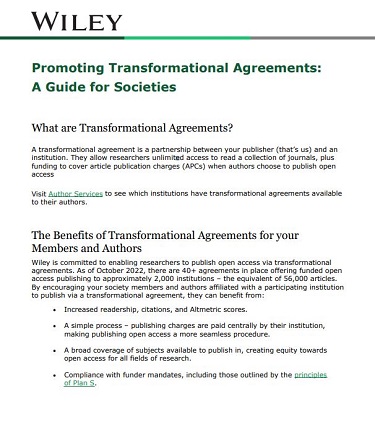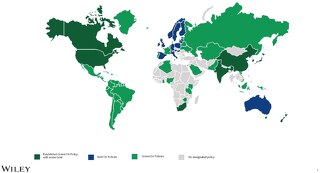the-whys-and-hows-of-society-rebranding-a-case-study-of-the-international-literacy-association
April 29, 2015
We recently spoke to Dan Mangan, Director of Public Affairs for the International Literacy Association, about the process and challenges of rebranding the International Literacy Association.
Source: Dan Mangan
Q. The International Reading Association, founded in 1956, was a leading, well-established name in education. At what point did you realize that the association needed to be rebranded. Was there a specific situation that brought this realization to a head?
A. Literacy is not just about reading. Literacy is the ability to identify, understand, create, compute and communicate using visual, audible, and digital materials across all disciplines in any context. So calling ourselves the International Literacy Association (ILA) is a much better way to convey the breadth and scope of our programs and advocacy.
ILA has more than 300,000 literacy educators and experts across 75 countries. With 60 years of experience in the field, we have set the standards for how literacy is defined, taught, and evaluated. Today’s literacy professionals are faced with mounting challenges driven by resource issues and policy mandates. Their need for guidance, support, and leadership through an active professional community has never been greater.
By the same token, ILA has always acknowledged the transformative power of literacy to create more dynamic societies, prosperous economies, and meaningful lives. Accordingly, we have now expanded our focus by addressing literacy as a cause as well as a professional field.
This new perspective is what drove our decision to rebrand. As ILA, we are reaching out across sectors to enlist broad based support, financial and otherwise, to advance literacy around the world.
Q. What do you hope to get across to members, as well as non-members, through the rebrand?
A. We want our members to feel a dramatic new vitality as they engage with us to meet their professional needs. We are revising our website, enhancing our communications channels, developing new content resources, and reimagining our annual conference to provide better value and a more personalized experience.
What’s more we want them to see themselves at the core of a great cause. We want them and others to see ILA as the leading organization that advocates for literacy as a basic civil right, and that catalyzes leaders, teachers, government officials, and the general public to bring about a more literate world.
Illiteracy is solvable, but getting there requires joint action at every level. We want to leverage the professionalism and expertise of our members to create opportunities for all interested persons to join, partner with, or donate to ILA as a means of supporting our cause.
Q. Did you consult with outside help on the rebranding?
A. Yes, rebranding is a complex task that requires the utilization of specific skill sets and expertise that we simply didn’t have. We also understood that fresh eyes would be needed to overcome the natural habit of management teams to think and plan within the confines of the familiar.
Engaging external expertise of any kind presents a cluster of critical issues from costs and timelines to deliverables and quality control. Project process and communication will also loom large. We addressed these concerns right up front by crafting a detailed and tightly organized RFP:
- We identified the deliverables we were seeking with as much specificity as possible.
- We set a strict deadline for completion of the rebranding .
- We required projected charges to be at a sustainable margin to our total operating budget.
- We also required all costs to be itemized.
- We required strict adherence to the proposal format we provided.
After careful deliberation of the proposals we received, we selected IDEON as our partner on the rebranding.
Q. How did you implement the rebrand? What were the key steps?
A. First we conducted extensive brand equity surveys with members and non-members. Next, we created a stakeholder team drawn from our past presidents and board members, councils and affiliates, members at large, and senior staff managers. This team, representing a cross-section our constituencies, informed the new brand development every step of the way.
Through a series of onsite workshops and regular conference calls, we began to build the new brand. Our starting point was to translate what we learned from the survey data into branding objectives. We then identified our branding goals for key audiences and crafted an internal brand position statement.
Thereafter, the hard work of creating brand verbals and visuals began. In a series of exercises we worked back from our brand values to forge a conscious brand identity and give it a unique tone of voice, which now governs all of our messaging. Using words and images snipped from magazines, we then created a series of mood boards to arrive at an initial, crude graphical expression of the new brand. From these mood boards, the development of our logo and color palette commenced, with various stages of review along the way.
One might think that creating and approving brand verbals and visuals finishes the job. In fact, it simply gives you a toolkit and puts you at a new starting line. Implementing the new brand is the most complex step of the entire process. It requires planning a transition, setting a migration sequence, and choreographing the new brand launch for maximum impact.
Q. What was your biggest challenge in rebranding the International Literacy Association, and how did you address this?
A. Actually, the name change turned out not to be controversial. A number of our councils and affiliates had already substituted literacy for reading in their own names for the same reason that we did. The harder task was driving the culture change that rebranding requires. Rebranding teams continually find themselves disrupting the inertial pull of this year’s operating agenda and “the way we’ve always done things.”
Successful rebranding requires total commitment and a complete openness to put everything on the table as the effort proceeds. Getting comfortable with dramatic change, elevating the brand above all else, thriving on new possibilities and opportunities—these attitudinal shifts presented the biggest challenge.
Q. How have members reacted to the rebranding so far? How do you hope it will affect the relationship between ILA and its members?
A. So far the reaction has been overwhelmingly positive. We want the rebranding to mean something very personal to our members, to inspire them. We hope to raise their profile as the first responders and front line of spreading literacy, and in so doing, we want to inspire all persons of social conscience and public spirit to support them by helping to advance the cause of literacy through collaborative effort.
Q. If you could recommend three steps to other organizations considering a rebrand, what would they be?
A. First, be clear about what rebranding is. Discerning accurately what your members and key audiences most value in your organization’s operating history, and then leveraging that value—that’s the real work of rebranding.
Second, pay careful attention to those you select for membership on the rebranding stakeholder team. These are the individuals who will eventually become your core brand ambassadors.
Third, accept that there’s no going back once you start. Pervasive change is hard, and the effort to get there is massively time-consuming. You can expect to encounter moments when fatigue and frustration drive down morale, and you’ll need to cheerlead things back on course.










